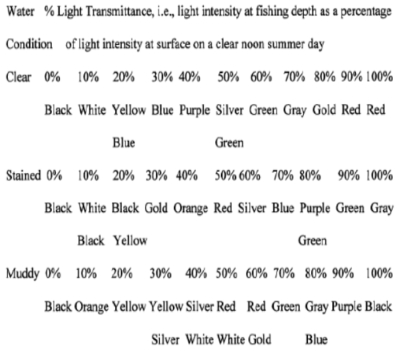Claims Directed to Selecting Fishing Hooks for Use Are Not Patentable
Christopher John Rudy, represented pro se, appealed from a decision of the Patent Trial and Appeal Board ("Board") affirming the rejection of claims 34, 35, 37, 38, 40, and 45–49 of U.S. Patent Application No. 07/425,360 ("the '360 application") as ineligible for patenting under 35 U.S.C. § 101. On April 24, 2020, the U.S. Court of Appeals for the Federal Circuit issued a decision affirming the Board's conclusion.
Mr. Rudy originally filed the '360 application on October 21, 1989, and so, somehow, it has been pending for almost 31 years!
The application, entitled "Eyeless, Knotless, Colorable and/or Translucent/Transparent Fishing Hooks with Associatable Apparatus and Methods," has undergone a lengthy prosecution, including numerous amendments and petitions, four Board appeals, and a previous trip to the Federal Circuit, in which the Court affirmed the obviousness of all claims then on appeal. In re Rudy, 558 F. App'x. 1011 (Fed. Cir. 2014).
Now, claims 34, 35, 37, 38, 40, and 45–49 of the '360 application stand rejected as ineligible for patenting under 35 U.S.C. § 101. Claims 26–33 and 54–60 stand allowed and all remaining claims of the '360 application have been cancelled by the applicant.
Of the rejected claims, claim 34 is illustrative and recites the following:
34. A method for fishing comprising steps of
(1) observing clarity of water to be fished to deter-mine whether the water is clear, stained, or muddy,
(2) measuring light transmittance at a depth in the water where a fishing hook is to be placed, and then
(3) selecting a colored or colorless quality of the fishing hook to be used by matching the observed water conditions ((1) and (2)) with a color or color-less quality which has been previously determined to be less attractive under said conditions than those pointed out by the following correlation for fish-attractive non-fluorescent colors:

The Federal Circuit followed the two-step framework for assessing patent eligibility under § 101, and noted that it is not bound by the Office Guidance, which cannot modify or supplant the Supreme Court's law regarding patent eligibility.
Thus, despite a portion of the Board's analysis being framed as a recitation of the Office Guidance, in this particular case, the Federal Circuit found that the Board's reasoning and conclusion are nevertheless fully in accord with the relevant caselaw.
Applying the Supreme Court's two-step framework, the Federal Circuit first determined whether the claims at issue are directed to a patent-ineligible concept, such as an abstract idea or a law of nature. The Federal Circuit found that claim 34 is directed to the abstract idea of selecting a fishing hook based on observed water conditions, which is a mental process of hook color selection based on a provided chart.
The Federal Circuit has held in the computer context that "collecting information" and "analyzing" that information are within the realm of abstract ideas, and the Court stated that the same is true in other contexts, including the fishing context.
The Court stated that claim 34 requires nothing more than collecting information (water clarity and light transmittance) and analyzing that information (by applying the chart included in the claim), which collectively amount to the abstract idea of selecting a fishing hook based on the observed water conditions.
Mr. Rudy stated in his brief that "all that is required of the angler is observation, measuring, and comparison with a predetermined chart." Mr. Rudy continued, "even a fish can distinguish and select colors . . . the fisherman can do this too." The Federal Circuit explicitly declined "to adopt a bright-line test that mental processes capable of being performed by fish are not patent eligible," but noted that such an observation underscores the conclusion that claim 34 is directed to the abstract idea of selecting the color of a fishing hook.
Having concluded that claim 34 is directed to the abstract idea of selecting a fishing hook based on observed water conditions, the Federal Circuit turned to step two of the inquiry and asked whether the elements of the claim, either individually or as an ordered combination, transform the nature of the claim into a patent eligible application of that abstract idea.
In this case, the three elements of the claim (observing water clarity, measuring light transmittance, and selecting the color of the hook to be used) are each themselves abstract, being mental processes akin to data collection or analysis. Considered as an ordered combination, these three steps merely repeat the abstract idea of selecting a fishing hook based on observed water conditions.
The Federal Circuit made quick work here to determine that claim 34 fails to recite an inventive concept at step two of the test.
Thus, the Board affirmed the decision by the Board that the claims on appeal are ineligible for patenting.
In re Rudy (Fed. Cir. 2020)
Panel: Chief Judge Prost and Circuit Judges O'Malley and Taranto
Opinion by Circuit Judge Prost